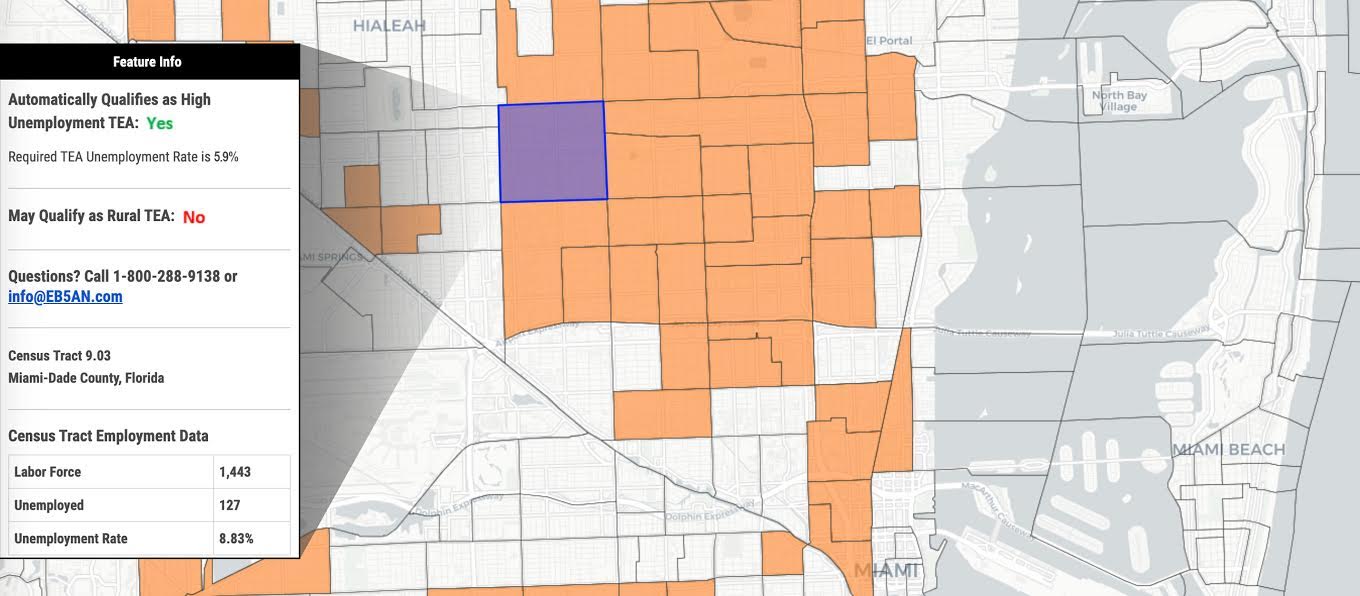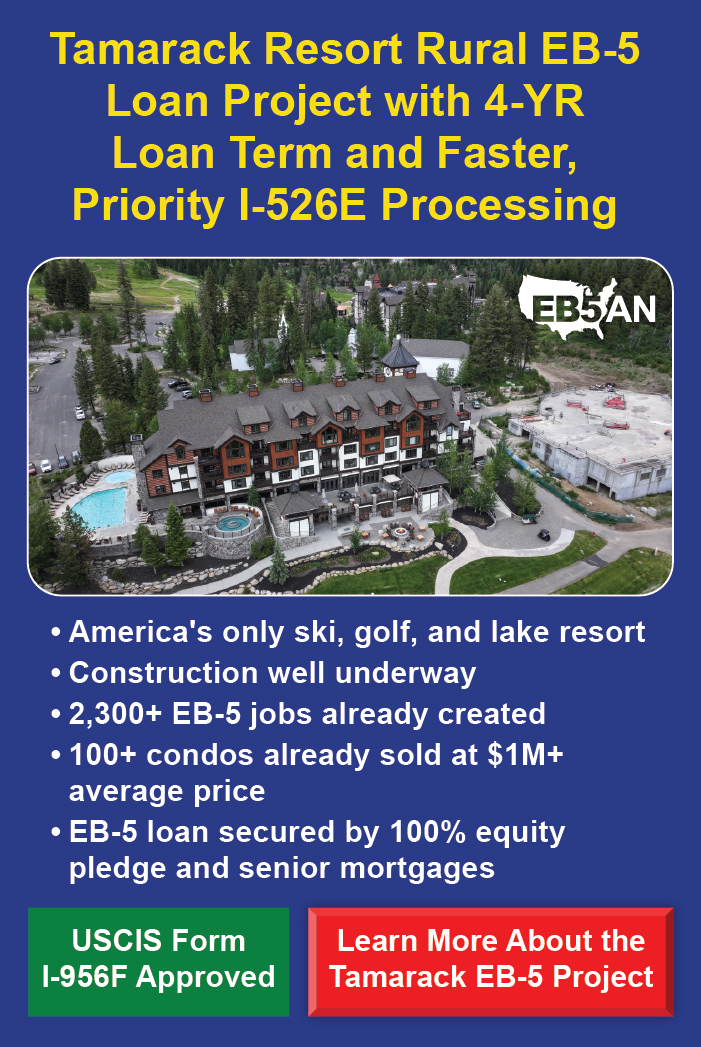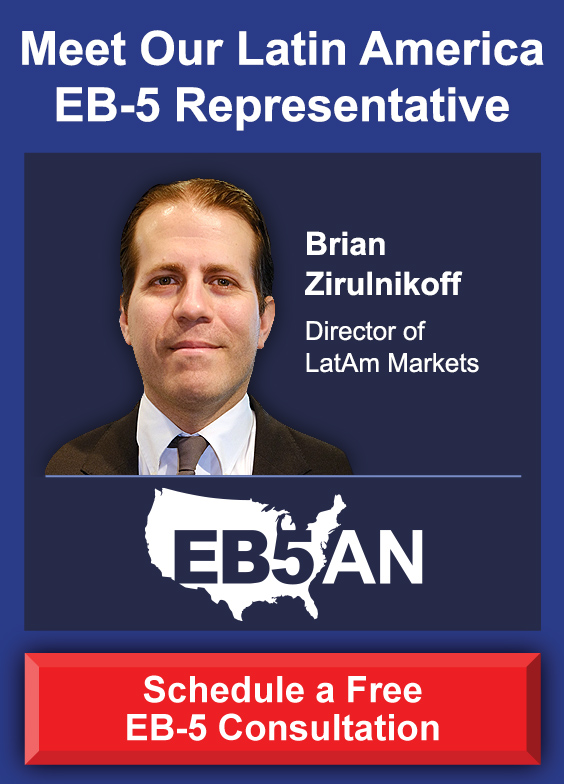EB5 Affiliate Network State of Michigan Regional Center
Geographic Coverage: All 83 Counties in the State of Michigan
now to learn more about becoming a business affiliate
Contact us now to see the official USCIS approval letter and learn more about becoming a business affiliate
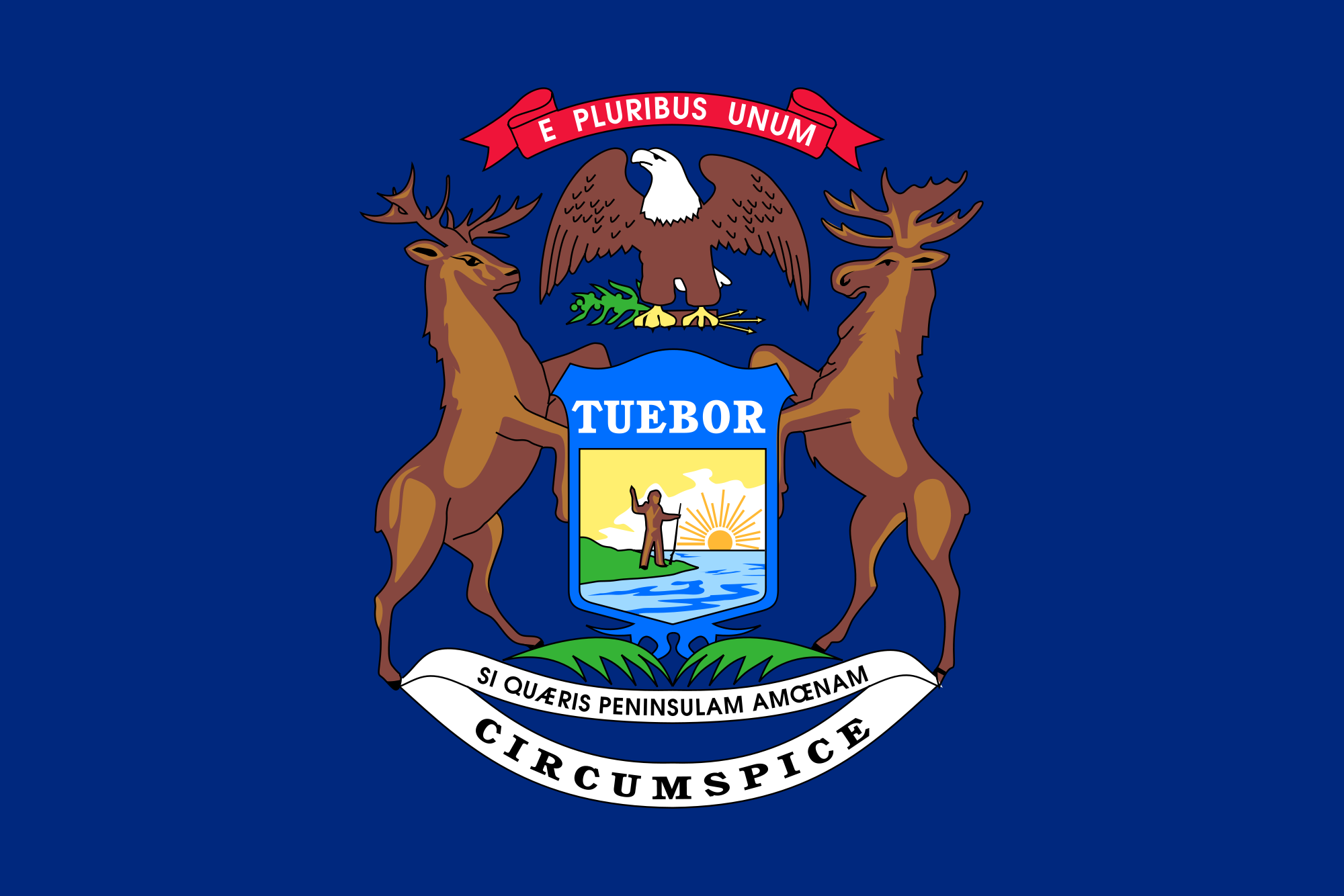
Benefits of Affiliation with our Michigan EB-5 Regional Center
Immediate Ability to Raise EB-5 Capital in Michigan
Business affiliates of EB5 Affiliate Network, including our Michigan EB-5 Regional Center, can immediately begin raising EB-5 investment funds in any of the designated geographic areas that comprise our regional centers. Click here to view our official approval listed on the United States Citizenship and Immigration Services Website.
Indirect Job Creation Calculations
Business affiliates of our regional centers can calculate job creation through both direct and indirect job methodologies, leading to higher job creation figures than direct non-regional center calculations of actual payroll employees.
Regional Center Affiliation Process
The affiliation process can be a fast solution and a great fit for those looking to begin a project immediately.
Our experienced team will work with you to understand if EB-5 is a good fit for your project and if you qualify to affiliate with our regional centers.
Let Us Create Your Own Michigan EB-5 Regional Center
Our Team Will Complete Your I-924 Application for a Michigan EB-5 Regional Center in 3 Weeks
EB5AN has obtained full state regional center coverage in multiple states and has completed over 100 USCIS-compliant business plans and economic impact studies. The I-924 application process is complicated and requires legal expertise, economic analysis, business plan creation, and an understanding of how USCIS adjudicates applications.
EB5AN has the internal resources to assemble all required aspects of an I-924 application. Additionally we have extensive experience with I-924 applications and understand all the key components and common pitfalls.
There are various approaches to take when filing an I-924 form, please contact us to learn more about the process and how we can work together to get your regional center approved quickly by the USCIS.
Targeted Employment Area (TEA) Approval Letter in Michigan for EB-5 Michigan Regional Center Projects
Please visit our EB-5 TEA Map to determine if your Michigan EB-5 regional center project is located in a census tract that automatically qualifies as a Targeted Employment Area (TEA).
Free Targeted Employment Area (TEA) Map for all 50 States
Click Image to View the TEA Map
![]()
![]()
To learn more about how USCIS reviews TEA designations and why is it important to obtain a TEA designation for an EB-5 project, please visit our main page on Targeted Employment Area (TEA) Designation.
Once you determine if your Michigan EB-5 regional center project is located in a TEA, you must request a formal TEA designation letter from USCIS.
For easy-to-follow instructions on how to obtain an official EB-5 TEA letter, please visit How to Get a TEA Letter. Here you will also find a set of sample materials, including an official TEA letter and a set of analyses completed in support of a TEA letter request USCIS.
If you still need assistance with getting an official EB-5 TEA letter for your EB-5 regional center project in Michigan, please contact us directly by phone at 1-800-288-9138 or via e-mail at info@eb5an.com.
About the State of Michigan and the Economic Climate of our EB-5 Michigan Regional Center
Our Michigan EB-5 regional center was created to provide an investment vehicle for qualified foreign investors seeking to obtain permanent resident status in the United States of America through an investment in a USCIS-approved EB-5 regional center with geographic coverage of all 83 counties in the state of Michigan.
The EB-5 Regional Center Program has been endorsed by Michigan Governor Rick Snyder, Senator Debbie Stabenow, Senator Gary Peters, and several United States Congressmen representing districts within the state of Michigan as a great opportunity for the United States economy and for foreign investors looking to immigrate to the United States of America and invest in a USCIS-approved Michigan EB-5 regional center such as the EB5 Affiliate Network State of Michigan Regional Center.
Michigan: Population and Income Demographics
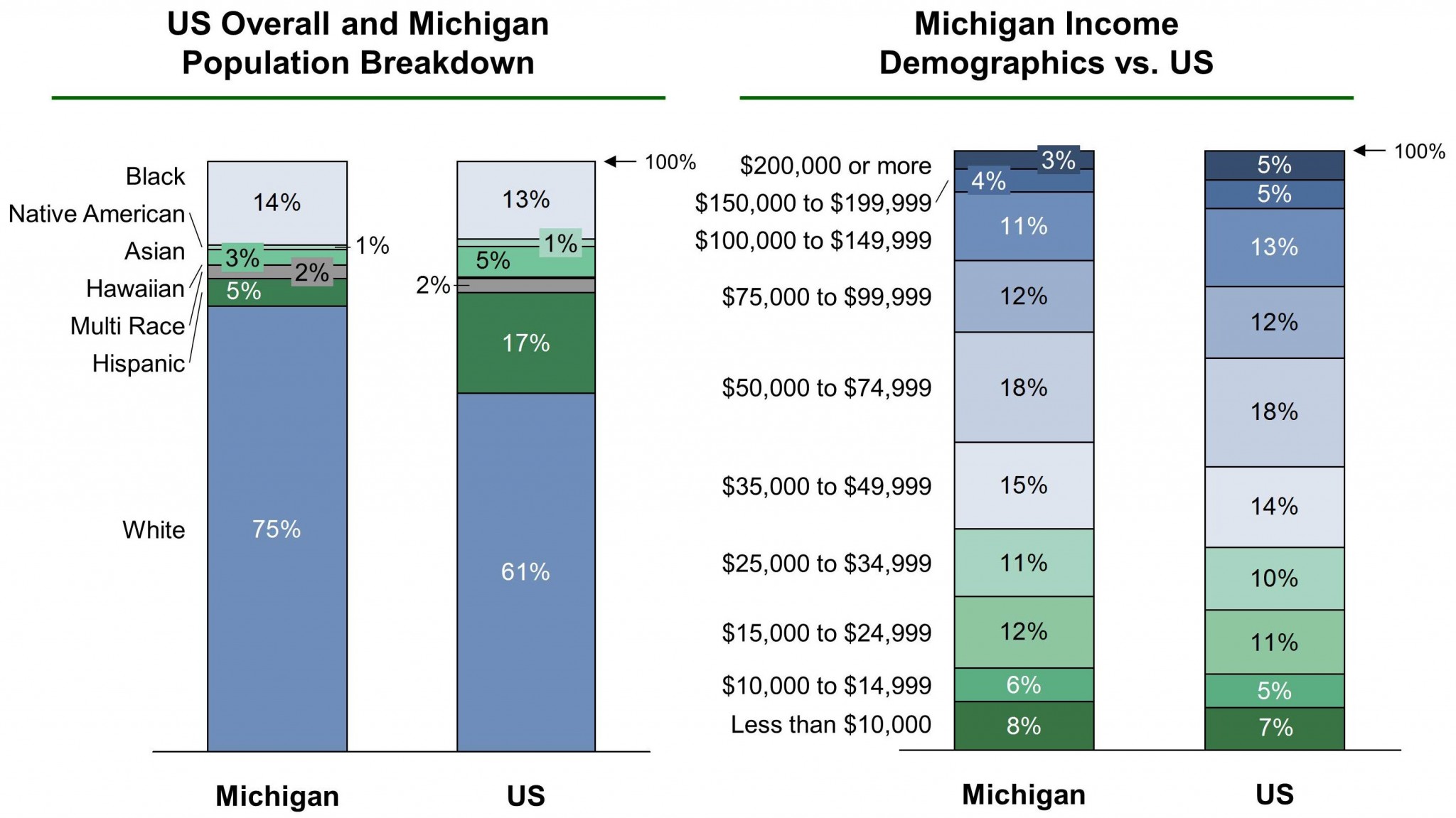
According to the 2010 U.S. Census, the state of Michigan had a population of approximately 7.9 million people over the age of 16. Of this, there are approximately 4.9 million people in the labor force, with 4.2 million who are employed and 616 thousand who are unemployed. These population numbers represent approximately 3.8 million households in the state of Michigan.
Michigan: Unemployment Trends
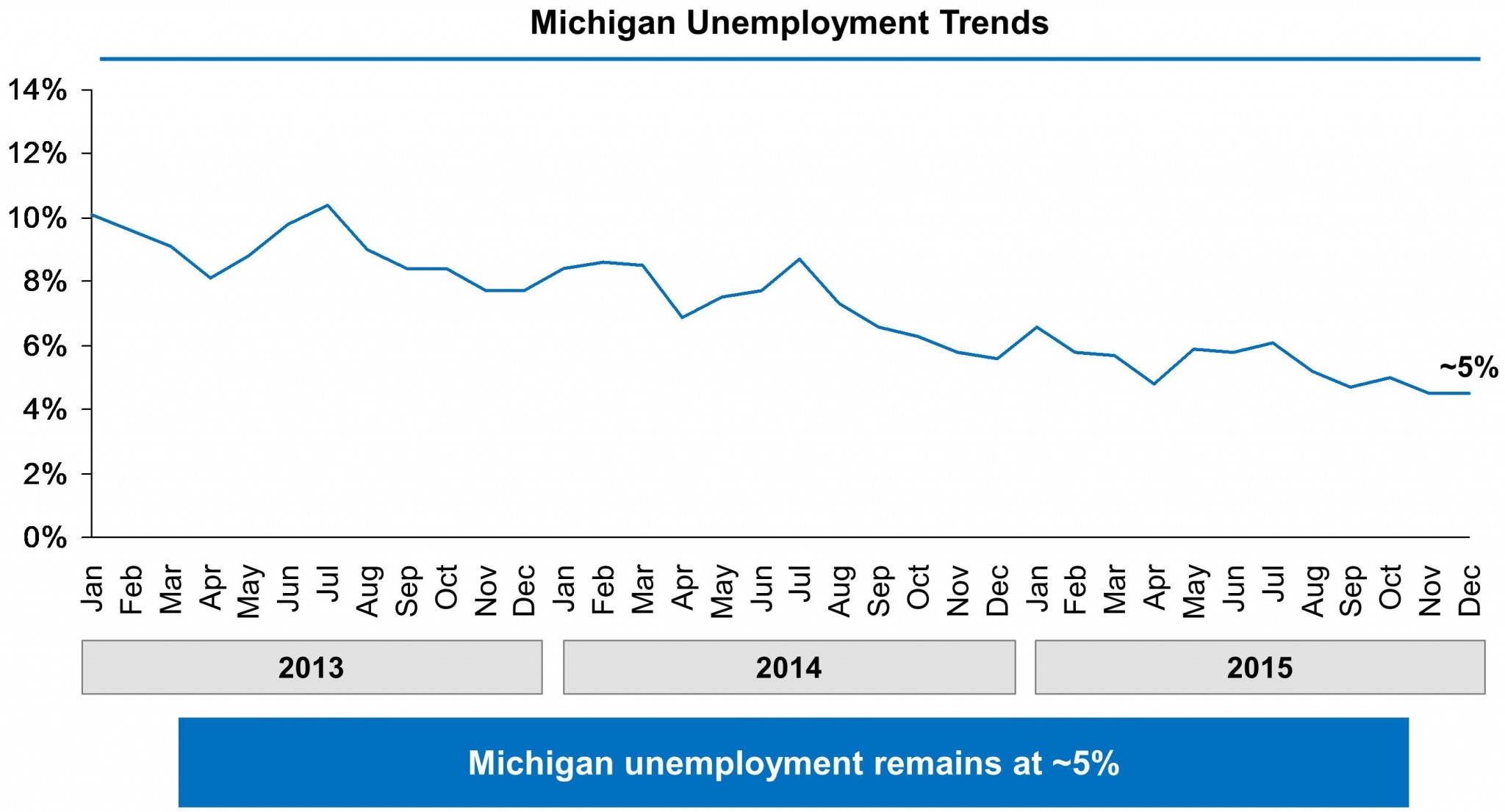
Unemployment statistics for the state of Michigan in 2015 show average unemployment at 5.4%. Monthly unemployment rates in the state of Michigan in 2015 were 5.0% for October 2015, 4.5% for November 2015, and 4.5% for December 2015.
The state of Michigan covers an area of 96,716 square miles, with a width of 386 miles and a length of 456 miles. This implies a population density of 175 people/square mile, which makes Michigan the 17th most densely populated state in the United States.
The capital of the state of Michigan is Lansing, the largest city is Detroit, and the largest metro area is the Detroit metro area. The Gross Domestic Product (GDP) of the state of Michigan in 2010 was $384 billion. This implies a CAGR ’00-’10 rate of 1.33% and a per capita GDP of $34,893. Michigan has the 13th-largest economy in the United States today by GDP.
The U.S. Economic Development Administration estimated Michigan’s 2013 gross state product to be $408.218 billion. Michigan’s products and services include automobiles, food products, information technology, aerospace, military equipment, furniture, and mining of copper and iron ore. Michigan is the 3rd leading grower of Christmas trees with 60,520 acres (245 km2) of land dedicated to Christmas tree farming. The beverage Vernors was invented in Michigan in 1866, sharing the title of oldest soft drink with Hires Root Beer. Faygo was founded in Detroit on November 4, 1907. Two of the top four pizza chains were founded in Michigan and are headquartered there: Domino’s Pizza by Tom Monaghan and Little Caesars Pizza by Mike Ilitch. Michigan became the 24th Right to Work state in the U.S. in 2012.
As of 2002, Michigan ranked 4th in the U.S. in high tech employment with 568,000 high tech workers, which includes 70,000 in the automotive industry. Michigan typically ranks 3rd or 4th in overall research & development (R&D) expenditures in the United States. Its research and development, which includes automotive, comprises a higher percentage of the state of Michigan’s overall gross domestic product than in any other U.S. state. The state of Michigan is an important source of engineering job opportunities. The domestic auto industry accounts directly and indirectly for 1 out of every 10 jobs in the U.S.
Michigan State Government & EB-5 Investment Financial and Employment Statistics
Michigan: Real gross domestic product (GDP) for 2011-2014
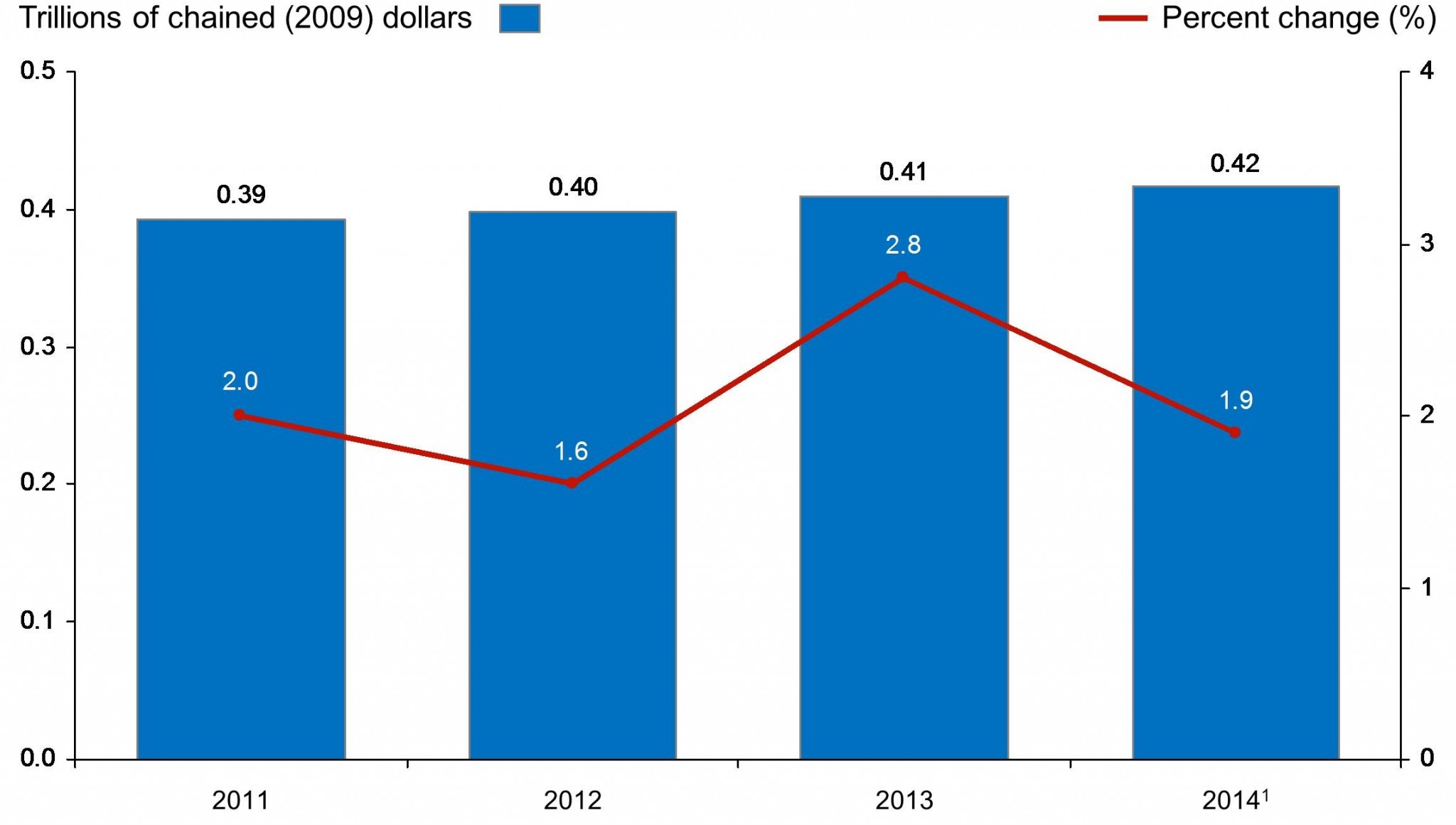
From 2011 – 2014, Michigan GDP grew by 7.7%, with an average annual GDP growth of 2.1%. In 2014, Michigan real GDP was $0.42 trillion dollars, the thirteenth in the U.S. 2012-2013 saw the largest percent change in GDP at 2.8%, signaling a strong and growing economy.
Michigan: Total personal consumption expenditures (2012-2014)
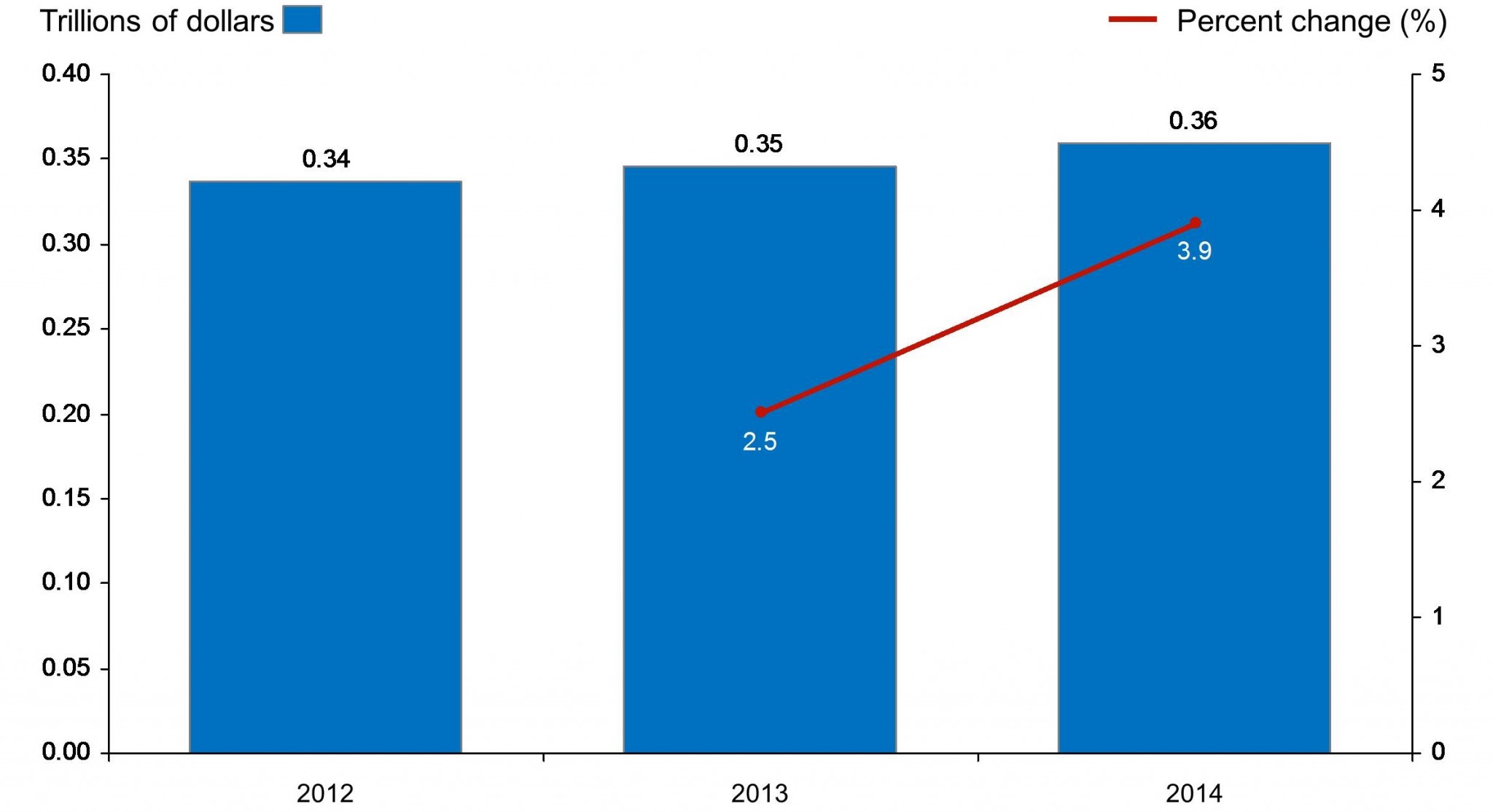
Personal consumption expenditure is the primary measure of consumer spending on goods and services and is a primary engine driving economic growth. Michigan personal consumption expenditures grew from $0.34 trillion in 2012 to $0.36 trillion in 2014. From 2013 – 2014, total personal consumption expenditure grew by 2.9%.
Michigan: State government finances (2013)
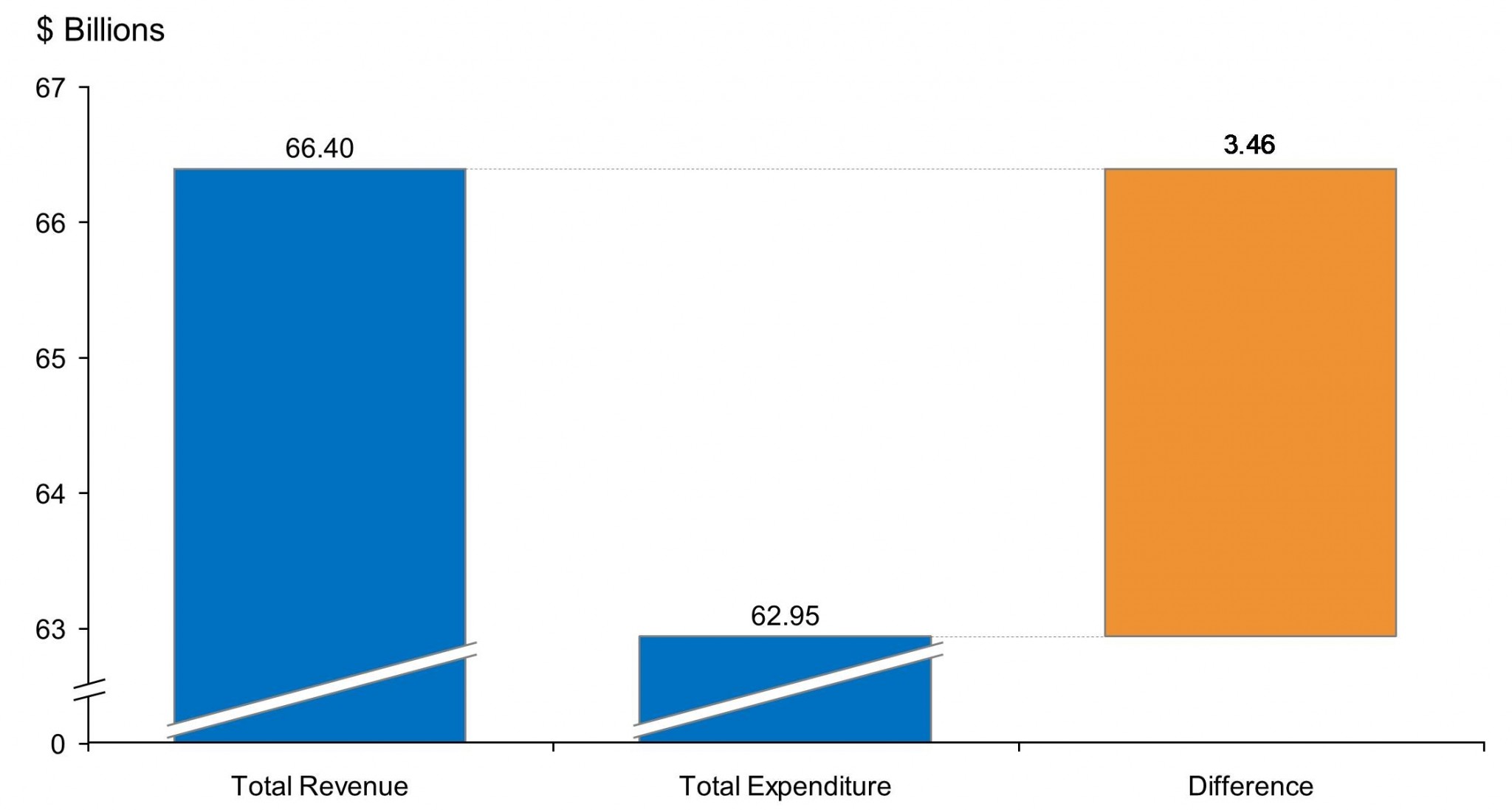
In 2013, the government of Michigan collected $66.4 billion in and spent $62.95 billion, resulting in a net difference of $3.46 billion. Revenue is sourced from federal and local taxes, sales tax, and individual and corporate taxes. Expenditures include education, welfare, highways, police, and other social services.
Michigan: Total economic impact of EB-5 investments (2013)
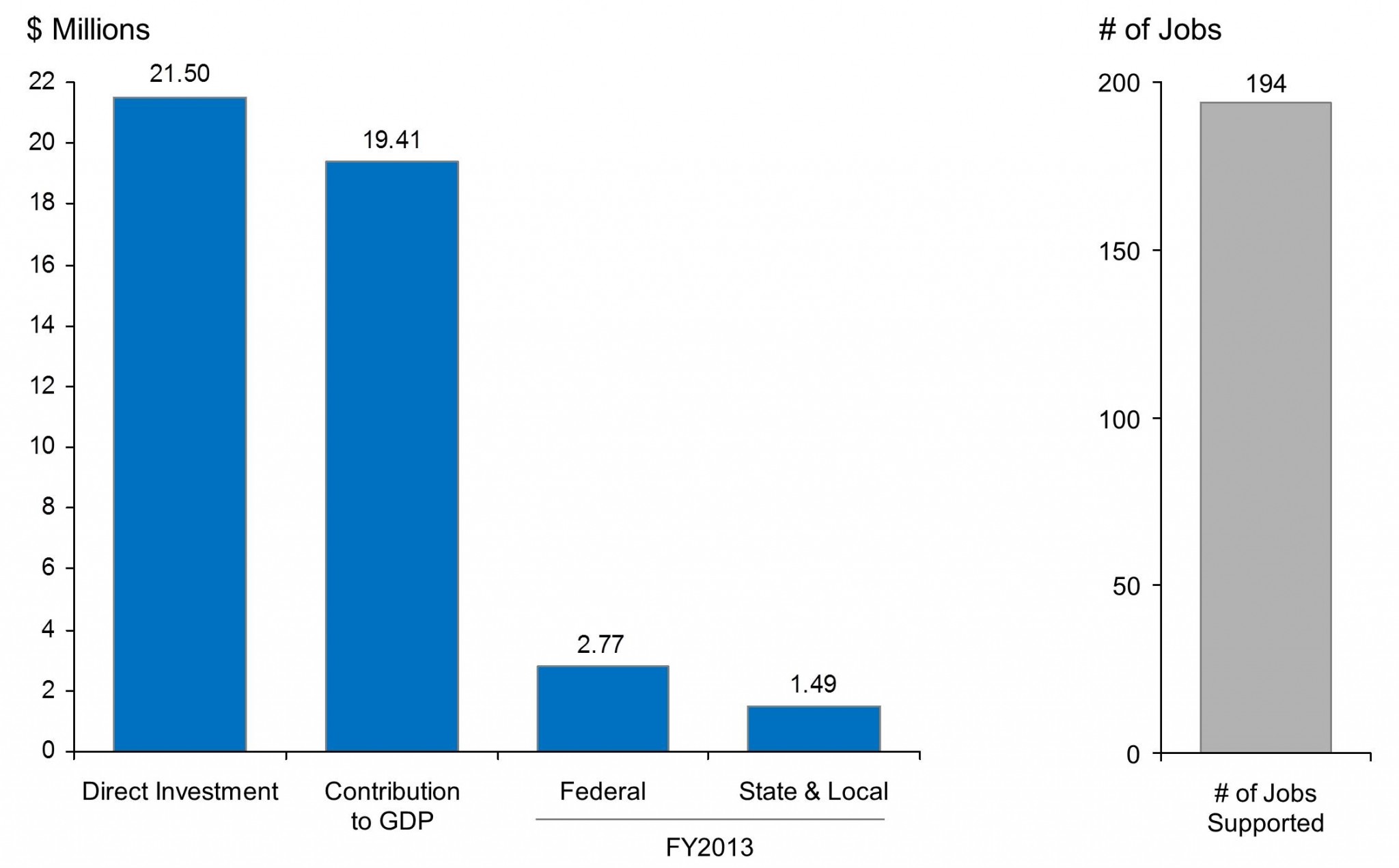
In Michigan, EB-5 investment has supported the direct creation of 194 jobs. These jobs were the result of roughly $22 million in direct investment from EB-5 projects, contributing $19.41 million to the state’s GDP. EB-5 investment in Michigan also contributed $2.77 million to federal revenue and $1.49 million to Michigan state government and local municipal revenue.
Michigan: New privately-owned housing units authorized by building permits in permit-issuing places
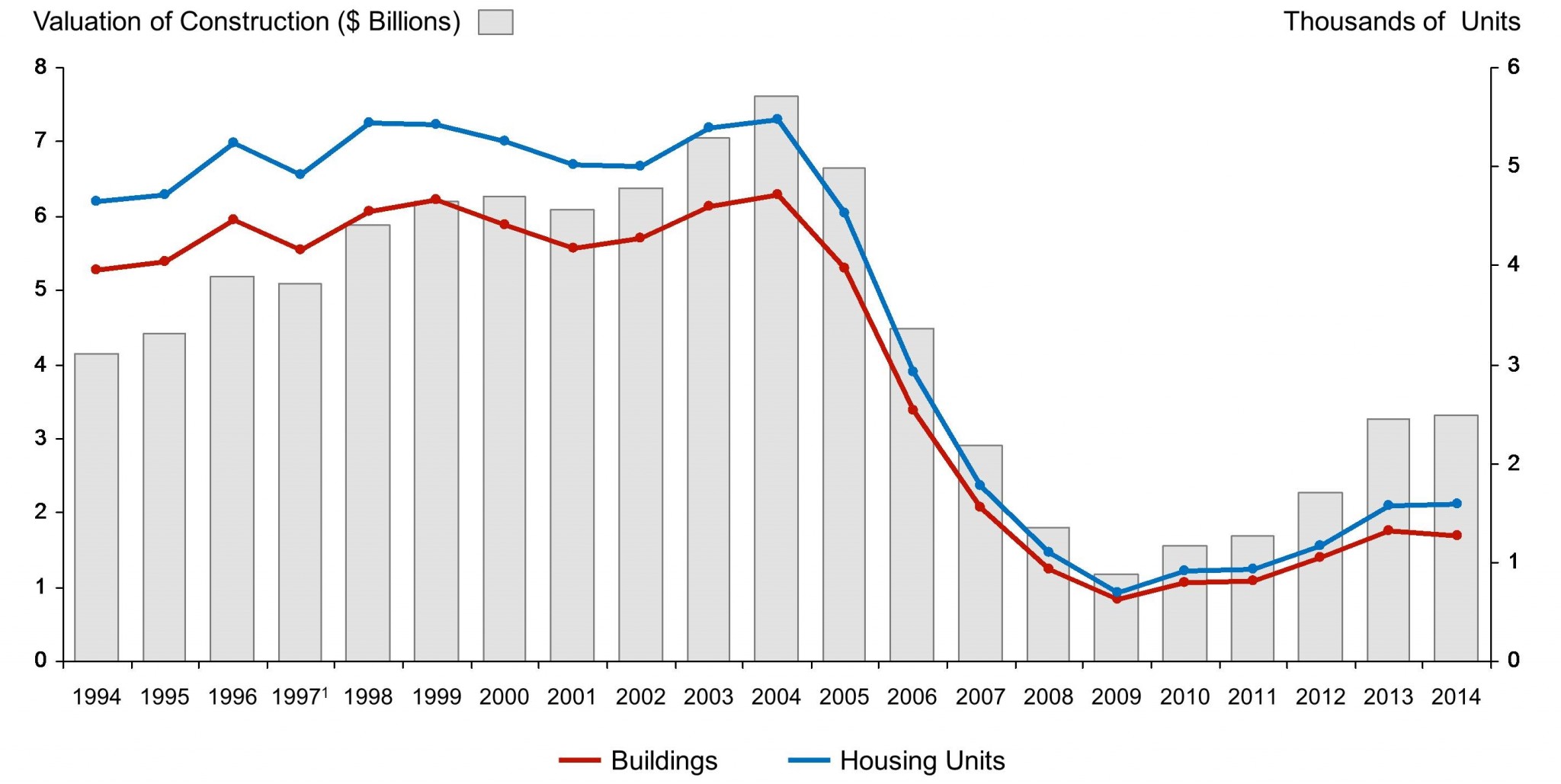
Since 2009, Michigan has seen an increased growth of privately-owned housing units both in new buildings and housing units. In 2014, roughly 2,500 privately-owned units were authorized by building permits. Most of these units are constructed in Michigan’s largest cities, which include Detroit, Grand Rapids, Warren, Sterling Heights, and Lansing.
The EB5 Affiliate Network State of Michigan Regional Center covers the entire state of Michigan, including the four largest cities in the state. Troy is located at the heart of Metropolitan Detroit’s northern suburbs and was ranked as the Safest Michigan City and 23rd overall Safest City in the United States. Ann Arbor is the sixth-largest city in Michigan and is centered on the University of Michigan. Farmington is a city in Oakland County known for its historic downtown, elegant Victorian-style homes, and one of Michigan’s top rated public school systems, Farmington Public Schools. Canton is Michigan’s second-largest township and eleventh-largest community.



